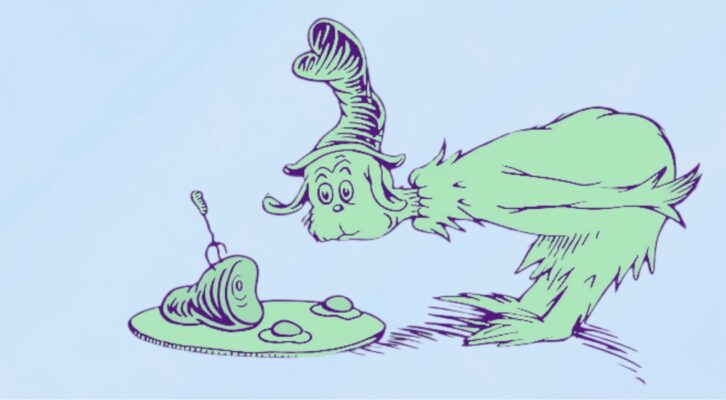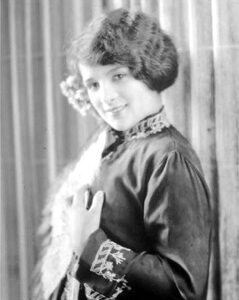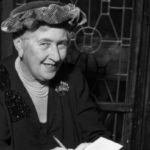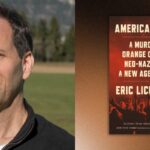
Is It Time to Move On From Dr. Seuss?
Jess deCourcy Considers the Staying Power of Green Eggs and Ham
August 12th marks the 65th anniversary of Dr. Seuss’s Green Eggs and Ham, a book whose orange cover fills me with delicious nostalgia. Svetlana Boym defines nostalgia as “a longing for a home that no longer exists or has never existed.” What imaginary home do I miss so much? And why do so many of us miss this same place?
As a children’s librarian who also teaches a graduate course on the History of Children’s Literature, I struggle with the question of how to present Dr. Seuss, aka Theodor Geisel. It is now widely known that Geisel’s political cartoons during WWII and early children’s books contained offensive depictions of Asian, Arctic Indigenous, Middle Eastern and African people.
My students of all ages devour Seuss. In my library in Queens, NY, kindergarteners through second graders clamor for Green Eggs and Ham after binge-watching the 2019 Netflix series of the same title (and all the Grinch and Lorax movies too). I will confess: when Random House offered my school the loan of a free Grinch costume of Broadway production quality, I jumped at the chance to host a holiday event where students could help grow the Grinch’s heart through acts of kindness. Geisel isn’t my students’ role model, but the Grinch is a fun cultural symbol that unites a variety of people. The event stirred up Seussmania, and library checkouts soared.
So while I do continue to read Dr. Seuss, I also reject Geisel as a cultural ambassador for children’s literature. For over two decades, schools have celebrated the National Education Association’s Read Across America Day on Dr. Seuss’s birthday, March 2, with children dressing up in red and white striped hats to represent their commitment to reading—as if Seuss were representative of all children’s books. In 2017, Katie Ishizuka-Stephens, Director of the Conscious Kid Library, asked the NEA to reevaluate their approach.
Ishizuka-Stephens’s report emerged the same year that Cambridge, MA librarian Liz Phipps Soeiro made headlines for rejecting First Lady Melania Trump gift of ten Dr. Seuss books, including Green Eggs and Ham, to her top-performing school in 2017. She described Seuss as a “cliche” and “tired and worn ambassador of children’s literature,” and recommended a list of ten diverse books instead. The ten books Soerio recommends are excellent additions to any library, but I wished for the inclusion of a silly, Mo Willems text or, better yet, a wacky book by a non-white author. Kids need to have belly laughs and almost pee their pants when reading—which is something that few other authors besides Seuss can do without invoking potty humor. I’m eager for more silliness.
It’s difficult to say why Seuss’s books have gripped us for over six decades. Green Eggs and Ham is an especially mysterious text, open to multiple interpretations.
The same year that Soerio wrote to Mrs. Trump, 2017, three prominent children’s authors, Willems, Lisa Yee and Mike Curato, backed out of participating in an author festival to protest an offensive mural in the newly opened Wonderful World of Seuss Museum in Springfield, MA. The mural contained a “jarring racial stereotype” of an Asian man with chopsticks that appeared in And to Think I Saw It on Mulberry Street (1937). Seuss Enterprises and the museum later announced their decision to remove the mural, and the authors agreed to reschedule, but weren’t invited back.
This same year, scholar Philip Nel published Was the Cat in the Hat Black? (2017) which cites convincing archival evidence that Geisel based the Cat on blackface minstrel shows, in which he participated as a student in Dartmouth. Ishizuka-Stephen drew on Nels in her report, and within two years, the NEA rebranded the day around multicultural books and gradually the Cat in the Hat disappeared from Read Across America logos. Today, the initiative seems to be going strong.
Still, Seuss dominates so much of our imaginations around childhood. It may take another generation or two to reset our perspective so that Seuss isn’t synonymous with children’s literature. I spoke with Kesi Augustine, PhD, a debut children’s author and scholar whose research focuses on children’s literature to ask for her insights. Recently when Augustine was promoting her picture book, Faith Takes the Train (HarperCollins 2025, illustrated by Mokshini), an adult reader approached her before she had even started her event.
The reader asked if she was a children’s author, and related that Green Eggs and Ham was his all-time favorite book. As he and Augustine engaged in a conversation about Seuss, Augustine observed the powerful nostalgia that can cast a spell on us for decades, preventing us from discovering new authors. Isn’t 65 years of Green Eggs and Ham enough? What new books will become beloved for generations? “We need to let go of the idea that the lone white male author represents the pinnacle of children’s literature.”
In reality, Augustine’s book represents the direction children’s literature seems to be going—realistic, social justice-focused and by and about diverse people. In Faith Takes the Train, the titular character rides the New York subway with her mother, delighting in a peanut butter, jelly and honey sandwich. When a man and his son make their way through the subway car, asking for food, Faith recognizes them and wonders why no one on the train seems to care about their suffering. She envisions herself a princess building a castle of peanut butter, jelly and honey sandwiches for the hungry, and offers up the sandwich to her neighbors.
I could delight in Seuss at storytime more easily if I knew that the younger generations were being educated about Geisel.
Gently narrated in an authentically childlike, poetic voice, Faith is illustrated by Mokshini with lush colors and dreamy, sweeping acrylic and watercolor reminiscent of the artwork in Madeline books. It’s a timeless story for which the author drew on experiences she witnessed of food insecurity during the pandemic. Faith Takes the Train is a book for the future. It even has humor. It’s not the silly Seussian kind, but we need all varieties of humor in literature.
While Faith may be best for children ages five to eight, the slightly younger Green Eggs and Ham audience may gravitate towards repetitive books by Salina Yoon and Mo Willems, which have a limited vocabulary. Yoon, who won the award named after Theodor Geisel, charms with her Penguin series (Bloomsbury, 2013-223). I am searching for more books like Yoon’s for this age group.
It’s difficult to say why Seuss’s books have gripped us for over six decades. Green Eggs and Ham is an especially mysterious text, open to multiple interpretations. It has been described as a Marxist parable—banned in Maoist China—as well as a philosophical or mystical text. Scholars have noted that the Hebrew name Samuel means “name of God.” This makes the incantation “Sam-I-am, Sam-I-am,” especially significant.
In interviews, Geisel consistently stated that Green Eggs and Ham had no deeper meaning or symbolism. His publisher bet him $50 that he couldn’t write a book containing only 50 one-syllable words. After many revisions over a year Geisel produced a book with 49 monosyllabic words and one multisyllabic word, “anywhere.” The story resonated with children who push back against food offerings and authority figures.
Hungry for more perspectives from the children’s literary community on Green Eggs and Ham’s 65th anniversary, I reached out to Pat Cummings, who has published picture books since the 1980s and was once selected for Reading Rainbow. Her first middle grade mystery, Trace (HarperCollins, 2020) is a ghost story touching on African-American history and in a haunted New York Public Library. One of my favorite of Cummings’ works is a West African retelling of Beauty and the Beast authored by her husband, H. Chuku Lee. When I asked about Seuss, Cummings acknowledged that he “struck a chord” but quickly added, “I’m not the one to comment on Green Eggs & Ham I think…I never really got it…You might add that I’m a vegetarian… that might’ve skewed my opinion.”
I’m envious of readers like Cummings, who never caught the Seuss bug and didn’t need to purge it from their systems the way many of us librarians do. We do know that Geisel’s views evolved over time, and that Horton Hears a Who (1954) and The Sneetches and Other Stories (1961) promote inclusivity and anti-discrimination, but we also know that some of Seuss’s imagery in books that still circulate in libraries today can be extremely offensive.
In 2021, Seuss Enterprises announced it was permanently canceling the publication of six Seuss books due to racist stereotypes, and today those books can only be purchased as used copies. The six cancelled books will circulate in most public libraries until the physical copies wear out, after which they will not be replaced. I was able to borrow four of the six books from public libraries in New York and my own school library. However, I have removed the two copies in my school library from circulation and put them in storage.
Some librarians believe that restricting or removing the offensive texts is called quiet censorship. New York children’s librarian Amy McAbee, believes in promoting all Seuss books as long as the author’s racism does not manifest on the page.
“There are few writers of children’s books who are able to tap into children’s innate sense of humor” and use “intricate wordplay,” McAbee said. When reading Fox in Sox in storytime, McAbee’s youngest, pre-reading patrons delighted in “reciting the passage about tweedle beetles at top speed.”
I could delight in Seuss at storytime more easily if I knew that the younger generations were being educated about Geisel. When I visited the Seuss Museum with my children this summer, we experienced the first floor as a children’s playground filled with photo opps. The second floor, geared for adults, presented early drafts of Seuss books and ephemera, but no unpacking of his political views. The light tone of the museum was ideal for my six-year-old, but I wished my thirteen-year-old could have analyzed Seuss’s offensive cartoons about Japanese internment camps to better understand American history. She is ready for that.
So, to borrow a line from Nels, “What do we do with Seuss?” As a past winner of the Geisel Award, children’s author Grace Lin asserts in her blog, “I honor Theodor Geisel as a man who outgrew his racism and created some of the best books of children’s literature of all time. And without an explanation, I abhor the single image” of an Asian man with chopsticks once displayed in the Seuss Museum.
Rachel G. Payne, coordinator of early childhood services at Brooklyn Public Library and debut author of Let’s Rumble: A Rough and Tumble Book of Play (Rise x Penguin Workshop, July 2025, illustrated by Jose Pimienta), does not promote Seuss because he doesn’t need it. Instead, she moves towards books of the future, like her own. Payne and Pimienta’s book features culturally and gender-diverse characters, and a child with a hearing aid, but it’s not didactic about inclusion. The entire focus is joy and play. Like Augustine and Mokshini’s Faith Takes the Train, Let’s Rumble is a future classic.
When Augustine encountered the bookstore shopper who seemed fixated on Seuss, she asked if he knew about Geisel’s racism. The man did not, but he was ready to confront it. “That’s inexcusable,” he said. “But we should know what to take and what to leave behind. And we should hope the future looks back on us with compassion.”
Jess deCourcy Hinds
Jess deCourcy Hinds is a writer and librarian in NYC. Her work has been featured in numerous outlets, from NPR to the New York Times' Modern Love column to literary journals such as Quarterly West. She works as a youth librarian at two Title 1 schools, and teaches graduate-level courses on children's literature. Photo credit: Doug Weiner.



















